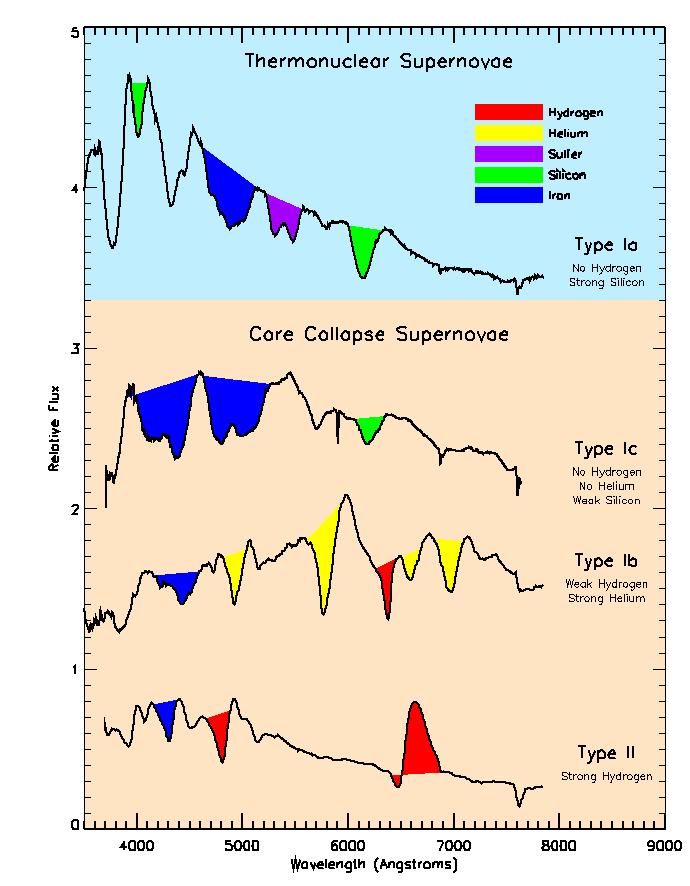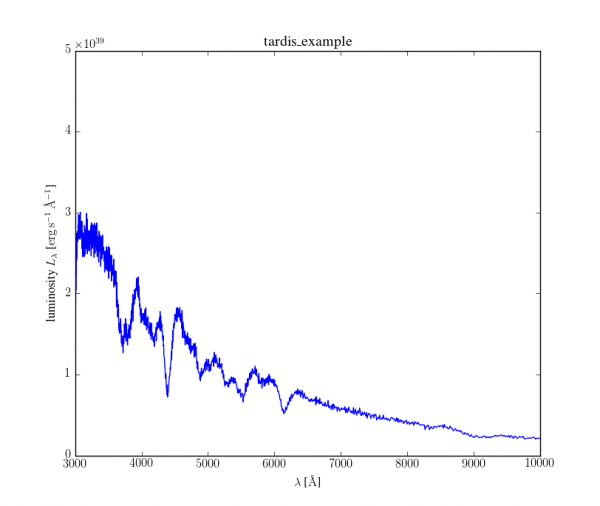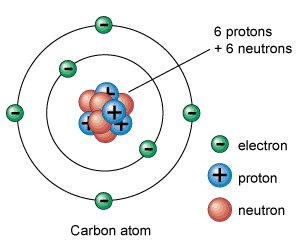Table of Contents
TARDIS GSoC 2019 Ideas Page
A bit of astronomy and astrophysics background information
A supernova (here we show SN1994D in the Galaxy NGC4526 - image source: wikipedia) marks the brilliant death throes of a star, during which it outshines its entire galaxy. It not only marks death, though: supernova ejecta change the evolution of the universe and enable the formation of planets and life as we know it. From the iron in your blood to the silicon in your laptop, supernovae return heavy elements assembled from the primordial hydrogen and helium left after the big bang.
There are still many mysteries surrounding supernovae (e.g. their precise origins, inner workings, …). One way to study these objects in more detail is to split the light coming from these objects into its components (like using a prism) and analyzing the resulting data (which is called a spectrum). Here, we show spectra (black lines) of a number of different supernova types (image courtesy Daniel Kasen and LBL). Different chemical elements present in the supernova leave their mark on the spectra by imprinting characteristic features, so-called atomic lines (regions highlighted in colour). Thus, studying and interpreting such spectra allows us to identify what supernovae are made of.
With sophisticated computer simulations astronomers try to reproduce the observed spectra to draw conclusion about the properties of the supernova ejecta and ultimately the explosion mechanism and progenitor stars. TARDIS is such a numerical code. It calculates theoretical spectra based on a number of input parameters, such as the supernova brightness and the abundances of the different chemical elements present in the ejecta (e.g. Oxygen, Silicon, Iron, etc.). The main idea for this procedure is that by finding a close match between theoretical and observed spectra we identify the parameters that actually describe the supernovae.
The TARDIS project
As mentioned in the background information above, TARDIS is a scientific tool (more specifically a Monte Carlo radiative transfer code) whose primary goal is the calculation of theoretical spectra for supernovae. Below, you find the typical result of a TARDIS calculation. It shows the calculated synthetic spectra for a simple supernova model. This particular setup (tardis_example) is officially provided by the TARDIS collaboration on the documentation.
TARDIS aims to be an easy to use piece of software for research and training purposes. Unlike many other scientific codes, we have purposefully made it open-source. This enables scientists to use the code to analyze their observations, but also to review the code and potentially fix errors.
List of GSoC 2019 project ideas
In the TARDIS collaboration we first establish a detailed plan on implementing new features before starting the actual work. This is an important step that ensures that the entire TARDIS collaboration is informed about the development efforts and that the team members can help shape the ideas during the discussion phase. We call these documents TEP - TARDIS Enhancement Proposals. We already have a great list of ideas at https://github.com/tardis-sn/tep that we need help with. Some of these we have specially selected for GSoC 2019 and are listed with specific “warm-up” tasks below. But feel free to propose your own TEP and make a PR on that.
If you use one of our TEPs, you can definitely add more detail to the implementation, but what we really want to see is a detailed timeline with milestones that shows us that you have thought about how to implement the feature in three months. For any questions about the projects, please ask on Gitter.
Putting in a Pull Request with the First objective is essential for each proposal to allow to see how you work.
Expanding the Integration-Testing Framework
Difficulty: Easy
Astronomy knowledge needed: None
Mentors: Vytautas Jancauskas, Ulrich Noebauer
Programming skills: Python
Related TEP: TEP001
GSoC Application Tag: integration-testing
Description: Testing a scientific code like TARDIS is very important. We need to ensure that the scientific insights we gain using the code are not based on bugs. Open collaboration with GitHub is great, but the more people work on the code the more opportunities there are to introduce bugs. Making sure that the code doesn't change or only changes as we expect it, is thus an important part of TARDIS development.
We have two types of tests: unit tests that verify small portions of the code and full-scale integration tests. Both of these test types are implemented with a framework. But the integration tests are difficult to use.
- currently we mainly run the integration tests on an external server. We want to integrate them into our general Azure Pipeline continuous integration routine. We'd also like to expand that and check also different properties of our model against reference data (e.g. electron densities, ionization fractions, dilution factors)
- hand in hand with expanding the verification process we will improve the reporting process which should contain detailed plots and comparison results. A framework exists but is currently not actively used.
Your first objective if you choose to accept the mission: Setup the integration tests to run once a week on Azure pipelines given the examples at https://tardis.readthedocs.io/en/latest/running_tests.html
Atomic Datasets
Difficulty: Medium
Astronomy knowledge needed: Low/None
Mentors: Luke Shingles, Mark Magee
Programming skills: Python, Parsing, Databases, SQLAlchemy
Related TEP: TEP004
GSoC Application Tag: atomic dataset
Description: In addition to the input parameters (brightness of the supernova, ejected mass of the different chemical elements, etc.), TARDIS requires data for describing the structure of atoms from different elements (e.g. a sodium atom is differently structured than an iron atom; see the figure for a quick overview for carbon).
This data is not measured by astronomers, but is most often gathered in a lab by atomic physicists. As measurement equipment gets more and more precise, so do the measured structures of different elements. Thus these values update from time to time and are often available in simple ASCII files (http://kurucz.harvard.edu/atoms/1401/gf1401.gam). While we have compiled a small atom data set from some specific sources for our initial work, we would like to get a collection of parsers that can read the different ASCII formats of the group and put this information in a uniform database.
For this project you would help us make parsers for a variety of formats from a collection of atomic data sources (see the TEP) and in the second part put this into a database. The assembled database will not only be very interesting for us, but also for many other fields of astronomy that do rely on atomic data. A useful resource of understanding atomic structure description can be found in http://www.physics.byu.edu/faculty/bergeson/physics571/notes/L27spectnotation.pdf.
We created a package that compiles all of this information into a database named Carsus (see http://carsus.readthedocs.io/en/latest/). For this year we aim to strengthen the link between Carsus and TARDIS and also include more atomic data into Carsus.
Your first objective if you choose to accept the mission: download the atomic data from http://kookaburra.phyast.pitt.edu/hillier/web/CMFGEN.htm and read in the tabulated data contained in si2_osc_kurucz.
New stream-lined model file
Difficulty: Medium/Hard
Astronomy knowledge needed: Low/None
Mentors: Yssa Camacho, Stuart Sim
Programming skills: Python
Related TEP: TEP007
GSoC Application Tag: new-model-format
Description: The main task that TARDIS accomplishes is to take a model of the exploded star and then simulate the transport of light resulting in a prediction of the observed spectrum. There are currently multiple formats to input the model. For this year, we aim to streamline this process and provide a single format for input. We will also provide converters for the legacy formats.
Your first objective if you choose to accept the mission: Combine the functionality from read_cmfgen_density and read_csv_isotope_abundances to read a single files that can interpret columns from both functions (https://github.com/tardis-sn/tardis/blob/master/tardis/io/model_reader.py).
Jupyter notebook widget for TARDIS
Difficulty: Hard
Astronomy knowledge needed: None
Mentors: Yssa Camacho, Laud Bentil
Programming skills: Python, Jupyter
Related TEP: TEP012
GSoC Application Tag: jupyter-widget
Description: Often we need more information about the model and the calculation than the mere spectrum. For example, we frequently need to investigate in detail how a specific spectral line feature forms, which ions and which specific line transitions contribute. For exactly this purpose a Qt-GUI was developed (see here). It allows the user to easily analyse TARDIS runs and extract important physical information without knowing the exact inner data structure of TARDIS.
QT for this type of application is no longer the ideal framework. Many applications now work with Jupyter notebook and we want to have a functional GUI that acts as a Jupyter widget. Once this is implemented, we would like to have several example notebooks that exist within the documentation so that it is easy for users to try it out themselves.
Your first objective if you choose to accept the mission: Make a Jupyter notebook and embed it in the documentation that showcases the current way of running TARDIS and plots a spectrum.
Distribution of TARDIS via conda
Difficulty: Medium
Astronomy knowledge needed: None
Mentors: Wolfgang Kerzendorf, Vytautas Jancauskas
Programming skills: Python, conda
GSoC Application Tag: conda
Description: TARDIS is a tool to analyze transient phenomenon like supernovae. It is important for researchers to quickly install this tool to react to newly observed objects. Anaconda offers a quick and easy way to install python packages and its dependencies. For this project, we want to make it easy to install TARDIS via Anaconda.
Your first objective if you choose to accept the mission: Make a conda packages for TARDIS following the instructions on https://conda.io/projects/conda-build/en/latest/source/recipe.html.
Enable the Dask framework for parallel execution for TARDIS
Difficulty: Hard
Astronomy knowledge needed: None
Mentors: Tyler Pritchard, Christian Vogl
Programming skills: Python, dask
GSoC Application Tag: dask
Description: Exploring different simulations of supernovae and comparing them with observations is one of the important tasks of TARDIS. This means that TARDIS needs to be run many tens of thousand times with different inputs. The Dask framework will allow TARDIS to be excecuted on multi-core systems and super-computers. This project aims to combine TARDIS with dask to make it easy to run many iterations of TARDIS.
Your first objective if you choose to accept the mission: Use dask to run distributed TARDIS instances in parallel on your system. Use http://distributed.dask.org/en/latest/client.html as a guide to make a simple example.
Improve the C/Python interface
Difficulty: Hard
Astronomy knowledge needed: None
Mentors: Wolfgang Kerzendorf, Christian Vogl
Programming skills: python, cython
GSoC Application Tag:c_interface
Description: TARDIS is a hybrid code built on C/Cython/Python. Currently, there is a lot of interface code to port the python data structures from Python via Cython to C. This makes the code cumbersome to test and try out new things. There are now several new ways that promise to make this easier. We want to try to use cFFI and Apache Arrow to do this.
Your first objective if you choose to accept the mission: use cFFI to provide an automatic interface for testing the parts in the montecarlo package instead of ctypes.
Profile TARDIS
Difficulty: Easy/Moderate
Astronomy knowledge needed: None
Mentors: Wolfgang Kerzendorf
Programming skills: python, cython
GSoC Application Tag:asv
Description: TARDIS is a code that prides itself on being relatively fast to compute a synthetic spectrum. We are also continuously adding additional microphysics in the code which sometimes requires additional calculation. It is important to understand how much this microphyiscs adds to the runtime of the code. For this we want to implement a benchmark in asv (airspeed velocity) that can automatically generate a report for us.
Your first objective if you choose to accept the mission: implement a simple benchmark in asv.





